Dec 15, 2025
Dec 15, 2025
The Glory of Greek Civilization
Continued from Previous Page
While dealing with the ancient Roman civilization in the previous part, it would be grossly unfair not to highlight or mention the contribution of the Greek civilization, which in fact preceded the Romans in the Mediterranean region and co-existed with all glory and glitter for a long period. In fact, Romans are believed to have copied many cultural and religious attributes from their Greek counterparts thousands of years ago. The Western scholars are often found divided over what period should be treated as the Greek civilization in stricter sense and generally they regard its emergence with the onset of the 8th century BCE and decline with the Greece falling to the Romans in 146 BCE. Notwithstanding, Greece too has a long civilizational history like other contemporary ancient civilizations, despite different nomenclature accorded to various iconic ages.
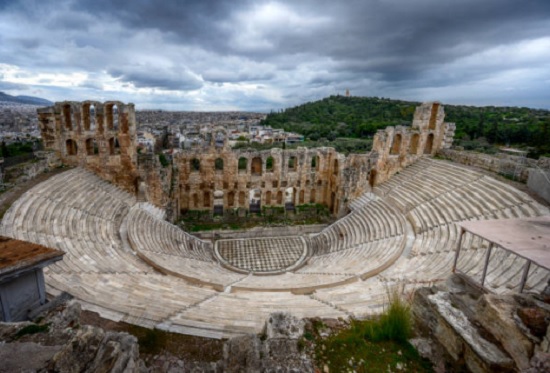
The Greek civilization too has made significant contributions to the world history with their philosophy, literature, mathematics, astronomy, medicine, and so on. The Greeks preceded the Romans and, consequently, much of the latter culture was influenced by the former including their rituals, belief systems, and deities. The ancient Greece also produced many sophisticated sculpture and architecture. The hybrid culture of the Greek and Romans have continued to influence the various other cultures across the world even through the modern age. Alexander the Great is one of the few most important and influential personalities of the ancient age, who during his peak ruled much of Europe, Western Asia and Northern Africa, and even reached up to the Indian subcontinent. Before him, the ancient Greece was comprised of numerous city-states, which were united and integrated under Alexander.
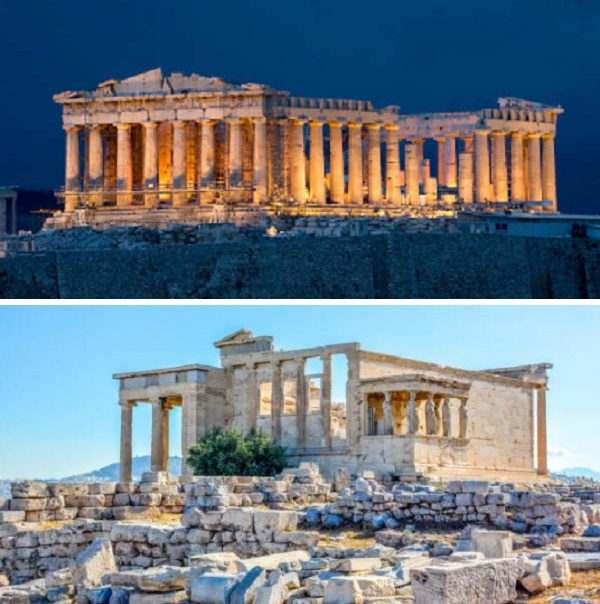
Some of the significant contributions of Greeks to the world are still remembered and valued. For instance, the marathon race in Olympics and many other parts of the world is a gift of the ancient Greeks. The Politics, art, architecture, education, language, and philosophy in the Western world are considered to be the erstwhile pillars of ancient Greek civilization. Similarly, like the ancient Indian civilization, the Greek civilization too was rich in its literature. Ancient Greeks’ two epics, Iliad and Odyssey by Homer, are considered the oldest all-time great Western classics. In fact, some Western scholars even try to glorify these classics at the cost of the Indian epic Mahabharata, ignoring the fact that while the Greek classics are largely mythical narratives of gods, demi-gods and mortals, the Indian classic include the tales of Solar and Lunar dynasties with whole range of the ancient wisdom and knowledge on philosophy, spirituality, duties of king and citizens, socio-economics, science, and so on.
A Brief Ancient Civilizational History of Greeks
While the modern Greece is located at the crossroads of Europe, Asia, and Africa, the ancient Greece is actually considered as the cradle of Western civilization, being the birthplace of democracy, Western philosophy, literature, historiography, political science, major scientific and mathematical principles, Western drama, Olympic Games, and so on. The territories of Greece are mountainous; consequently, the ancient Greece was comprised of many small regions popularly known as city-states, everyone with its own dialect, cultural peculiarities and identity. Due to this diversity, the regionalism and regional conflicts were a notable feature of the ancient Greek civilization. These city-states in the ancient Greece were located in valleys between the mountains, or on coastal plains, and dominated adjacent area around them.
The history of Greece embodies the chronology of events in the territory of the modern Greece and other adjacent territories of the Mediterranean region where the Greek people traditionally inhabited and ruled in the ancient times. The archaeological evidence of human occupation here dates back to the Mesolithic and Neolithic era from 13,000 BCE to 3,100 BCE. While the Mesolithic age was marked by the primitive nomadic people but by the Neolithic age, the sufficient evidence of agricultural settlers or societies exist. The later period from about 3,100 BCE to 1,100 BCE, often referred to as Bronze age by the Western scholars, was characterized by the Cycladic culture, Minoan and Helladic periods but the overall knowledge of these early civilizations of Greece is rather vague, and more reliable history is known only from 8th Century BCE onwards. The earlier period roughly covers the agriculture and metal-based economy upto the rise and fall of Mycenaeans.
From 3,200-3,100 BCE to 1650-1600 BCE, Cycladic, Minoan and Helladic cultures flourished but not much is known about their customs and traditions. Of these, the Cycladians were found throughout the islands of the Cyclades in the Aegean Sea; the Minoans inhabited Crete, the largest of the Greek islands; and Helladics lived in the Greece mainland. The fusion and transformation of the Helladic and Minoan cultures led to the evolutions of Mycenaean civilization in Greece around 1,600 BCE that lasted till around 1,100 BCE, which according to the Western historians and scholars is also the age of the ancient Greece representing the Greek mythology and religion as set in the epics of Homer. This period was arguably characterized by the warrior aristocracy, early scripts and remarkable burial practice. The Mycenaean nobility was often buried with their armour, jewelled weapons, gold masks and tiaras, and some were even mummified. The Mycenaean civilization collapsed around 1,100-1,050 BCE and the region experienced a “dark age” with the remarkable decline of the population and literacy due to variety reasons.
The period 1100-800 BCE is broadly referred to as the dark age in the Greek history. The period finds mention of the Dorian invasion (some historians refer it as Dorian migration), end of the Mycenaean civilization, the rise of the Greek city-states in the 9th century BCE, the epics of Homer and other earliest writings in the Greek alphabets. The fall of the Mycenaean supposedly coincided with similar nemesis of the empires like the Hittite and Egyptian in the east and the aforesaid invasion is often attributed to the islandic people bearing superior (iron!) weapons. Although any historic names are not available but different kings are believed to have ruled during this period which were eventually replaced by the aristocracy. The period also experienced constant wars and the warfare was increasingly focused on the infantry compared to cavalry in the past. The period also experienced the use iron replacing bronze and allied metals for manufacturing weapons and tools. Towards the end of the dark age, the Greek civilization experienced a renaissance including relearning from the Phoenicians, which led to spreading of their influence to the far areas of the Black sea and Spain, and even into Italy and Gaul areas.
With the onset of the 8th century BCE, the Greek civilization started recovering from the dark age. During this period, they adopted the Phoenician alphabet, and modified it to evolve the Greek alphabet system leading to many written records. During this period, Greece was divided into many small city-states which were basically the self-governing populations. The fact that the geography in the region was such that every island, plain and valley was demarcated by the sea or mountain ranges, suited best for the city-state concept. The Western historians call it the Archaic Period of Greece during which it imbibed significant cultural attributes from the Orient (Eastern culture from the ancient Asia), including religion and mythology. Archaeological evidences suggest that the Archaic Greece was remarkable for the Geometric pottery comprising of the human and animal figurines.
The 5th and 4th centuries BCE are considered as the classical period of Greece that experienced several wars and annexation of the much part of the modern age Greece by the Persian Empire and later freedom from it. It is widely believed that the Classical Greece had great influence on the Roman Empire and substantive modern age Western politics, architecture, sculpture, literature, philosophy, theatre and scientific temper was derived from this age of the Greek history. Two major Persian Wars between 499-449 BCE are narrated in Herodotus's Histories, which is actually an illustrated account of the Greco-Persian Wars supposedly documented around the year 425 BCE. Herodotus's Histories are basically a chronicle of how Athens founded the Delian League of different city-states in 477 BC, who contributed their ships, soldiers and funds to form a common army to repulse the Persian attacks on Greece.
The Classical period was followed by the Hellenistic period; the invasion of Alexander the Great on the Achaemenid Empire around 330 BCE and its fall led to establishment of the Hellenistic kingdoms over the south-west Asia (Seleucid Empire, Kingdom of Pergamon), north-east Africa (Ptolemaic Kingdom) with his influence reaching upto South Asia. In a nutshell, it was a sort of the Greek colonization of the Asia and Africa, where several Greek ruled cities and kingdoms were established. Alexander became the most prominent personality of the Greek history, whose conquests led to fusion of many cultures and languages, including a common Attic-based Greek dialect Koine, of the mutual advantage. Broadly speaking, the period 420-146 BCE is known as the Hellenistic period; however, some scholars tend to extend the Classical period upto the death of Alexander in 323 BCE and treat the following period upto the Battle of Corinth in 146 BCE as Hellenistic, wherein Romans inflicted a crushing defeat to the Greeks.
The Battle of Corinth was fought between the Roman Republic and the Greek Achaean League in 146 BCE. The Achaean League was basically a Hellenistic-era confederation of Greek city-states on the northern and central Peloponnese, a peninsula and geographic region in southern Greece. This war led to the complete and total destruction of Corinth ushering in the period of Roman dominance and rule in Greece. However, the definitive end of the Hellenistic Greece came through the Battle of Actium in 31 BCE, when Rome’s Octavian (future emperor Augustus) defeated Greek Ptolemaic queen Cleopatra and Mark Antony. The war was essentially a naval battle between the fleet of Octavian and combined forces of Mark Antony and Queen Cleopatra of Egypt in the Ionian Sea near the promontory of Actium in Greece. However, the rule of Romans over the Greece did not destroy the Hellenistic society and culture, which remained largely unchanged until the advent of Christianity with the onset of the middle ages.
The Hellenistic period of Greece ushered in prime glory for Greece due to its power and cultural influence over the large parts of the old world. As the dominant power in the Mediterranean world and most parts of West and Central Asia, including that of the Indian subcontinent, Greece flourished with prosperity and progress in various disciplines like the arts, literature, theatre, music, architecture, mathematics, philosophy, science and exploration. The Hellenistic period also experienced the rise of New Comedy, Alexandrian poetry, the Septuagint and the philosophies of Stoicism, Epicureanism, and Pyrrhonism. The religious sphere too expanded to include new gods such as the Greco-Egyptian Serapis, eastern deities such as Attis and Cybele and a syncretism between Hellenistic culture and Buddhism in Bactria and Northwest India.
The ancient Greece was comprised of hundreds of relatively independent and small city-states (poleis) and, as mentioned earlier, the geography of Greece itself was largely responsible for this fragmentary nature of the state. This was unlike other contemporary civilizations and societies which were mostly either tribal or kingdoms ruling over relatively large territories. However, nearly all of the city-states were bound by the same culture, religion and language. Usually, one official presided over the residual and ceremonial king like functions (basileus) which by archaic period became aristocratic oligarchies. The Athenians are also credited with the foundation of first democracy by Western definitions. Arguably, people in Athens (main city and capital now) were divided in four social classes based on the distribution of wealth but slaves had no power or status. In these city states, only free, land owning and native-born people could be citizens entitled to all facilities and protection under the Greek law. Nearly one-third and at times even higher population comprised of slaves from within or brought from other countries.
Education was mostly private with the exception of Sparta, and during the Hellenistic period, some city-states also established public schools. The education of boys was oriented towards reading, writing and military service, while girls were trained in simple arithmetic apart to manage households apart from usual reading and writing. Ancient Greek mathematics including the numbers, basic rules of geometry, the idea of formal mathematical proof, mathematical analysis and applied mathematics, had significant impact on future development in this field across the world. Many derivations and discoveries of Greek mathematicians like Pythagoras, Euclid and Archimedes are still in vogue everywhere.
Reportedly, during the fifth and fourth centuries BCE, the ancient Greece had most advanced economy from the Western point of view. Greek philosophy had distinct elements of inquiry and reasoning which influenced even the modern European philosophy and science. Some of the more well-known philosophers of ancient Greece are Plato and Socrates, many works of Plato such as “The Republic” are still valued. The literature and poetry were well developed, the earliest epic works being that of Homer’s Iliad and Odyssey. Music was an essential part of the Greek society on all occasions including marriage, religious ceremonies and funerals; theatre, folk music and the ballad-like reciting was common. The Greek sculpture and architecture were well developed and emulated by other contemporary cultures and more particularly by the Romans.
Greek Gods and Goddesses
Like most other contemporary civilizations, religion was a central theme of ancient Greek people and they were polytheistic worshipping many gods and goddesses. Various city-states and tribes believed and worshipped similar gods but their practices varied at different places. Although the Greek pantheon had numerous deities but around sixth century some twelve Olympian gods increasingly received more acceptance in the Greek society. Besides, public prayer and animal sacrifice of mainly sheep and goat was an important part of the Greek religious life. Some important gods and goddesses of the Greek pantheon are briefly discussed here.
1. Zeus
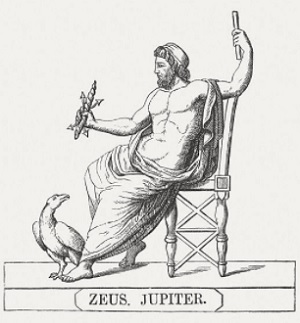 Zeus is the king of gods who resided at the Mount Olympus and represented the sky and thunder in the ancient Greek religion. He was somewhat similar to Roman Jupiter as also other Indo-European gods like Perun, Indra and Thor. As the king of the gods and ruler of Mount Olympus, he was in-charge of the sky, weather, thunder, lightning, law, order, and justice. He was the youngest son of Cronus and Rhea, who overthrew his father in a power struggle for the sovereignty over the heavenly abode of gods. In Greek arts, he is depicted as a regal and mature persona with a sturdy built up and dark beard. His other attributes are the royal sceptre and thunderbolt made by the Cyclops, and his sacred animals and plants were eagle, bull and oak.
Zeus is the king of gods who resided at the Mount Olympus and represented the sky and thunder in the ancient Greek religion. He was somewhat similar to Roman Jupiter as also other Indo-European gods like Perun, Indra and Thor. As the king of the gods and ruler of Mount Olympus, he was in-charge of the sky, weather, thunder, lightning, law, order, and justice. He was the youngest son of Cronus and Rhea, who overthrew his father in a power struggle for the sovereignty over the heavenly abode of gods. In Greek arts, he is depicted as a regal and mature persona with a sturdy built up and dark beard. His other attributes are the royal sceptre and thunderbolt made by the Cyclops, and his sacred animals and plants were eagle, bull and oak.
In his power struggle with Cronus and other Titans, Hades and Poseidon actively supported him. Zeus was married to the sister- goddess Hera, with whom he fathered Ares, Hebe and Hephaestus. Zeus is also known for infidelities and erotic liaisons with many other goddesses and mortals. According to oldest Greek epic Iliad, Zeus fathered Aphrodite from Dione. Greek mythology is full of his umpteen love interests and escapades in various disguises and consequent many offspring including other deities and heroic mortals, such as Athena, Apollo, Artemis, Hermes, Persephone, Dionysus, Perseus, Heracles, Minos, etc. Among the mortals, he is also known to have been enamoured with the Helen of Troy.
2. Hera
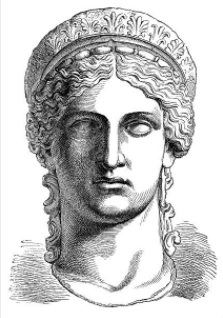 In the ancient Greek pantheon and mythology, Hera was the queen goddess of women, marriage, family and childbirth as one of the Twelve prominent Olympians. She was the sister-wife of Zeus and daughter of Cronus and Rhea. A matronly figure, she was believed to be both the patroness and protectress of the married women, weddings and marital union and bliss. In typical Greek arts, she is depicted as a regal female wearing diadem and partial veil with a lotus-tipped staff. Her sacred animals were the cow, lion, peacock and cuckoo. She is usually depicted as a reserved, suave and austere goddess but shown merciless and vindictive when it comes to Zeus’s infidelities and extra-marital affairs. In such eventualities, she was more vengeful towards the other women and their offspring rather than Zeus himself. Her Roman counterpart was Juno.
In the ancient Greek pantheon and mythology, Hera was the queen goddess of women, marriage, family and childbirth as one of the Twelve prominent Olympians. She was the sister-wife of Zeus and daughter of Cronus and Rhea. A matronly figure, she was believed to be both the patroness and protectress of the married women, weddings and marital union and bliss. In typical Greek arts, she is depicted as a regal female wearing diadem and partial veil with a lotus-tipped staff. Her sacred animals were the cow, lion, peacock and cuckoo. She is usually depicted as a reserved, suave and austere goddess but shown merciless and vindictive when it comes to Zeus’s infidelities and extra-marital affairs. In such eventualities, she was more vengeful towards the other women and their offspring rather than Zeus himself. Her Roman counterpart was Juno.
3. Poseidon
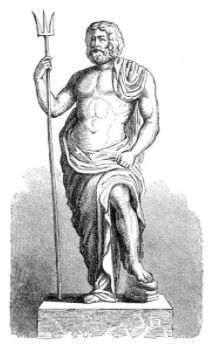 As the god of the sea, rivers, floods and droughts, Poseidon ruled one of the three realms of the universe. He is also the son of Cronus and Rhea, the brother of Zeus and Hades, and spouse of Amphitrite. In Greek art, his persona is shown as that of a mature man of sturdy build and a luxuriant beard, holding a trident or three-pronged spear. His sacred animals include the horse and the dolphin. Though he is god of sea and all waters but he is also called the god of earthquakes and horses. He is often linked with Medusa with whom he bore two children, the winged horse Pegasus and one-eyed giant Cyclops Polyphemus. According to Homer and Hesiod, Poseidon became lord of the sea following the defeat of Cronus, when the world was divided among his three sons; Zeus securing the sky, Poseidon the sea and Hades the underworld, while the Earth and Mount Olympus belonged to all three. His Roman counterpart in Neptune.
As the god of the sea, rivers, floods and droughts, Poseidon ruled one of the three realms of the universe. He is also the son of Cronus and Rhea, the brother of Zeus and Hades, and spouse of Amphitrite. In Greek art, his persona is shown as that of a mature man of sturdy build and a luxuriant beard, holding a trident or three-pronged spear. His sacred animals include the horse and the dolphin. Though he is god of sea and all waters but he is also called the god of earthquakes and horses. He is often linked with Medusa with whom he bore two children, the winged horse Pegasus and one-eyed giant Cyclops Polyphemus. According to Homer and Hesiod, Poseidon became lord of the sea following the defeat of Cronus, when the world was divided among his three sons; Zeus securing the sky, Poseidon the sea and Hades the underworld, while the Earth and Mount Olympus belonged to all three. His Roman counterpart in Neptune.
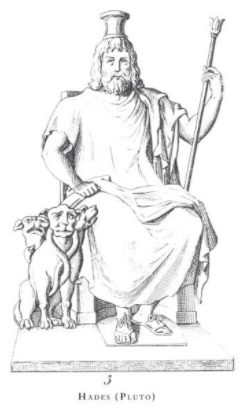 4. Hades
4. Hades
Hades was the god of the dead and the king of the underworld in the ancient Greek pantheon. He was the eldest son of Cronus and Rhea, and his consort was Persephone. In Greek arts, he is depicted as the sturdy and bearded person with the cornucopia or drinking horn, key, sceptre, and the three-headed dog Cerberus, and owl is his sacred animal. He is also depicted as the god of wealth because of the belief that all riches including precious metals come from the earth. His Roman counterpart is Pluto. According to a legend, He had kidnapped Persephone, daughter of Demeter, and made his queen. He was, however, not the ultimate judge of souls wandering in the underworld nor he decided punishment for their sins of the mortal life. As god of the underworld, Hades is depicted more altruistically inclined rather than evil, maintaining relative balance by holding his subjects equally accountable to the underworld laws.
5. Apollo
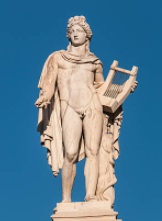 As one of the most important and complex Greek gods, Apollo was the god of knowledge, music, arts, dance, archery, truth, prophecy, manly grace, poetry, healing and diseases, the Sun and light, and many more things. He was the son of Zeus and Leto, and the twin brother of Artemis (the goddess of hunt) with both using a bow and arrow. In Greek arts, Apollo is depicted as young, handsome, and beardless with athletic build. He is one god that appears with the same name in both the Greek and Roman mythology. He was the patron deity of Delphi (Apollo Pythios), an oracular god—the prophetic deity of the Delphic Oracle. He was considered to help people and ward off evil, including that of the seafarers, foreigners, fugitives and refugees. Due to his name associated with so many aforesaid attributes, he was among the most loved and respected gods; also due to his qualities and association with human healing, many hospitals and institutions are named after him world over even in the modern age.
As one of the most important and complex Greek gods, Apollo was the god of knowledge, music, arts, dance, archery, truth, prophecy, manly grace, poetry, healing and diseases, the Sun and light, and many more things. He was the son of Zeus and Leto, and the twin brother of Artemis (the goddess of hunt) with both using a bow and arrow. In Greek arts, Apollo is depicted as young, handsome, and beardless with athletic build. He is one god that appears with the same name in both the Greek and Roman mythology. He was the patron deity of Delphi (Apollo Pythios), an oracular god—the prophetic deity of the Delphic Oracle. He was considered to help people and ward off evil, including that of the seafarers, foreigners, fugitives and refugees. Due to his name associated with so many aforesaid attributes, he was among the most loved and respected gods; also due to his qualities and association with human healing, many hospitals and institutions are named after him world over even in the modern age.
6. Aphrodite
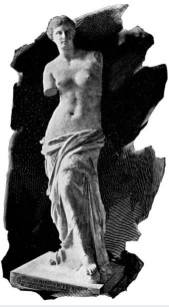 In Greek religion, Aphrodite is the goddess of love, desire, beauty, pleasure and procreation. According to Hesiod's Theogony, she was born off the coast of Cythera from the sea-foam produced by the primal Greek god Uranus's genitals, which was severed by his son Cronus and cast into the sea. However, in Homer's Iliad, she is mentioned as the daughter of Zeus and Dione. She is usually depicted as a nude or semi-nude lady, her Roman counterpart is Venus, her symbols include scallop shell, myrtle and roses, and sacred animals are doves and sparrows.
In Greek religion, Aphrodite is the goddess of love, desire, beauty, pleasure and procreation. According to Hesiod's Theogony, she was born off the coast of Cythera from the sea-foam produced by the primal Greek god Uranus's genitals, which was severed by his son Cronus and cast into the sea. However, in Homer's Iliad, she is mentioned as the daughter of Zeus and Dione. She is usually depicted as a nude or semi-nude lady, her Roman counterpart is Venus, her symbols include scallop shell, myrtle and roses, and sacred animals are doves and sparrows.
Aphrodite was married to Hephaestus, but did not bore any children from him. She had, however, many lovers and sexual liaisons, and bore many children from them. For instance, Ares, to whom she bore Harmonia, Phobos, Deimos and Eros (Cupid); from mortal shepherds Adonis and Anchises, she bore Aeneas. In Greek epic Iliad, Aphrodite is one of the goddesses along with Athena and Hera, whose feud led to the Trojan War. She had been a cult figure in the ancient Greece and her main festival, the Aphrodisia, was celebrated with fanfare across the Greece, more particularly in Athens and Corinth.
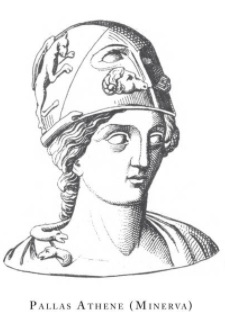 7. Athena
7. Athena
As ancient Greek goddess, Athena was one of the twelve Olympians associated with wisdom, handicraft, and warfare. She was believed to have born from Zeus’s forehead and was widely associated with intelligence, reasoning, skill, war strategy and peace besides the ones already mentioned. In arts, she is usually depicted as young and suave lady wearing the aegis over a long dress, crowned with a crested helm, armoured with a shield and spear. She was the patron and protector deity of various cities across Greece, particularly Athens. Her symbol was an olive tree, sacred animal owl and her Roman counterpart was Minerva. Her main cult temple was Parthenon in Athens.
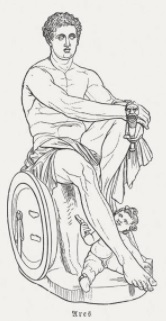 8. Ares
8. Ares
Ares was the Greek god of the war, courage, bloodshed and violence. He was the son of Zeus and Hera and one of the twelve Olympian gods. He has been often depicted with the physical, violent and untamed aspects of war associating with sheer brutality and bloodlust. He is personified as a beardless youth with a helmet and sword or spear, or as an armed warrior. Due to his aforesaid attributes, he was among the most unpopular Olympian gods while his sister Athena represented more of the military strategies and skills, or so to say the nobler aspects of war. His sacred animals were dog, boar, vulture and venomous snakes. In contrast, his Roman counterpart Mars was more balanced and dignified. Ares and Aphrodite produced Eros, the god of love and lust, who is more commonly known as Cupid.
9. Dionysus
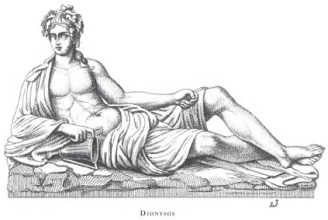 In Greek mythology, Dionysus was the god of the grape-harvest, winemaking and wine, orchards and fruit, vegetation, fertility, religious ecstasy, festivity, theatre, ritual madness, and so on. According to a legend, Dionysus was the twice-born son of Zeus and Semele (a mortal woman); Zeus snatched Dionysus from his mother's womb and stitched him into his own thigh and carried so until he was ready to be born; his consort was Ariadne. In the Greek art, he is mostly depicted as an effeminate, long-haired youth or occasionally as an older bearded god. He is shown with the thyrsus, a drinking cup, the grape vine and a crown of ivy. The sacred animals of Dionysus were dolphins, tigers, donkeys and serpents. He was the last Olympian gods (of 12) to enter Olympus and is also known for his travel across the world teaching people about the vine culture.
In Greek mythology, Dionysus was the god of the grape-harvest, winemaking and wine, orchards and fruit, vegetation, fertility, religious ecstasy, festivity, theatre, ritual madness, and so on. According to a legend, Dionysus was the twice-born son of Zeus and Semele (a mortal woman); Zeus snatched Dionysus from his mother's womb and stitched him into his own thigh and carried so until he was ready to be born; his consort was Ariadne. In the Greek art, he is mostly depicted as an effeminate, long-haired youth or occasionally as an older bearded god. He is shown with the thyrsus, a drinking cup, the grape vine and a crown of ivy. The sacred animals of Dionysus were dolphins, tigers, donkeys and serpents. He was the last Olympian gods (of 12) to enter Olympus and is also known for his travel across the world teaching people about the vine culture.
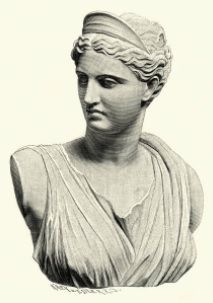 10. Artemis
10. Artemis
She was the virgin goddess of the hunt, wilderness, animals, the Moon and young girls. She was the daughter of Zeus and Leto, and twin sister of Apollo. Her Roman counterpart was Diana. In Greek art, she is depicted as a young and suave lady dressed in a short knee-length chiton carrying a hunting bow and quiver of arrows. Her sacred animal was a deer. Artemis has remained one of the most widely venerated deities in the ancient Greek, and her temple at Ephesus was one of the Seven Wonders of the Old World. Artemis was also worshipped as a primary goddess of childbirth and midwifery, and she preferred to remain a maiden by not marrying ever.
11. Demeter
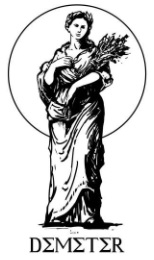 In Greek pantheon, Demeter was one of the twelve Olympian deities of the agriculture and harvest, presiding over grains and the fertility of the earth. Along with her daughter Persephone, the two were the central figures of the Eleusinian Mysteries, which was a religious cult in Greek with its roots probably in the Mycenaean period. She was the daughter of Cronus and Rhea, and parented Persephone with Zeus. Her Roman counterpart was Ceres. The most significant myth attached with her is abduction of her daughter by the underworld god Hades. Grief stricken Demeter searched for Persephone for long without success. Consequently, seasons stopped and growth of living things stunted; faced with this extraordinary situation, Zeus sent Hermes to bring her back from the underworld. Hades agreed to release her subject to the condition that she would eat nothing in the underworld. But she had already taken few pomegranate seeds that bound her with Hades in the underworld for certain months every year. The cult worship of Demeter and Persephone symbolized the restoration of growth and fertility on earth.
In Greek pantheon, Demeter was one of the twelve Olympian deities of the agriculture and harvest, presiding over grains and the fertility of the earth. Along with her daughter Persephone, the two were the central figures of the Eleusinian Mysteries, which was a religious cult in Greek with its roots probably in the Mycenaean period. She was the daughter of Cronus and Rhea, and parented Persephone with Zeus. Her Roman counterpart was Ceres. The most significant myth attached with her is abduction of her daughter by the underworld god Hades. Grief stricken Demeter searched for Persephone for long without success. Consequently, seasons stopped and growth of living things stunted; faced with this extraordinary situation, Zeus sent Hermes to bring her back from the underworld. Hades agreed to release her subject to the condition that she would eat nothing in the underworld. But she had already taken few pomegranate seeds that bound her with Hades in the underworld for certain months every year. The cult worship of Demeter and Persephone symbolized the restoration of growth and fertility on earth.
12. Hestia
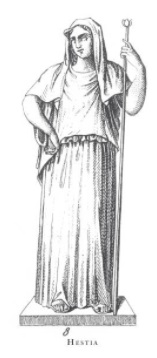 Hestia is the virgin goddess of the hearth, home, and chastity. In Greek mythology, she was the firstborn child of the Cronus and Rhea, and sister of Zeus. Hence traditionally she received the first offerings at every sacrifice as also the first and last libations of wine at feasts in the Greek households. In Greek arts, she is depicted as a modestly veiled lady and her symbols are the hearth and kettle. Her name and functions signify the importance of hearth in the socio-religious and political life of the ancient Greece, which was considered essential for warmth, food preparation and sacrificial offerings to deities. Her Roman equivalent was Vesta.
Hestia is the virgin goddess of the hearth, home, and chastity. In Greek mythology, she was the firstborn child of the Cronus and Rhea, and sister of Zeus. Hence traditionally she received the first offerings at every sacrifice as also the first and last libations of wine at feasts in the Greek households. In Greek arts, she is depicted as a modestly veiled lady and her symbols are the hearth and kettle. Her name and functions signify the importance of hearth in the socio-religious and political life of the ancient Greece, which was considered essential for warmth, food preparation and sacrificial offerings to deities. Her Roman equivalent was Vesta.
Apart from the aforesaid twelve Olympian gods and goddesses, the Greek pantheon had a large number of primordial deities such as Chaos, Gaea and Uranus; Titans and Titanesses such as Cronus, Rhea, Oceanus, Tethys, Atlas, Helios and Selene, and a lot many others; Olympians like Hephaestus, Hermes and Tyche; and a large number of lesser gods, demigods and giants. Though not in the list of twelve Olympians, Hephaestus was another significant god of fire, crafts and metalworks. He was the husband of the goddess of love Aphrodite and his Roman counterpart was Vulcan. Hermes was yet another significant god linked with the travel, communication, trade, language, writing, boundaries and thieves. As son of Zeus and Maia, he was among the faithful and trusted gods under Zeus. Similarly, another worth mentioning Greek goddess Tyche represented the aspects of fate, fortune and chance; the ancient Greek people believed that she was the reason behind all unexpected (good or bad) events in their lives.
Greek Mythological Legends
Among the Western civilizations, the ancient Greek literature and mythology is most probably the richest with an invaluable heritage of legendary tales involving feuding gods, adventurous heroes, vicious giants and demi-gods, epic adventures and stories of vengeance and love. Although the Indian Epics and Puranas are no less valued in volumes and contents, rather better than Western literature on many counts, but many Western historians see Homer’s Iliad and Odyssey as the oldest and greatest all time Epics and both belong to Greeks. The corpus of Greek mythology is enormous and has traditionally inspired other cultures and countries to emulate it. A few mythical and more famous legendary tales are briefly enumerated here to let the readers have a feel of its richness.
1. The Greek Creation and Olympus Legend
This legendary tale finds a mention in the Hesiod’s Theogony. According to this, there was nothing but Chaos (the gaping emptiness) in the beginning. From this formless void, three primordial entities (divine beings) namely Gaea (earth), Tartarus (underworld) and Eros emerged, and with Eros around, Gaea and Chaos were able to procreate all known and unknown things in the universe beginning with the Greek gods and goddesses.
Chaos produced Erebus (darkness) and Nyx (night), and the union of these two led to many offspring that represented various natural forces and abstract emotions. In the meantime, Gaea gave birth to Uranus (the sky), who became her husband and enveloped her from all sides. They together produced three sets of offspring; twelve Titans, three one-eyed Cyclops and three hundred-handed Hecatoncheires (giants). From the union of the first Titans, six males and six females were produced, of which male Cronus and female Rhea united to procreate more offspring. As Uranus was not ready to release Gaea from their (sexual) union, Cronus castrated his father and threw his genitals into the sea and the sea-foam thus gave birth to Aphrodite.
Cronus became the ruler Titan god and Rhea was his sister-wife. Gaea and Uranus had a prophecy that Cronus would eventually be overthrown by one of his sons. Due to his own betrayal of Uranus, Cronus felt insecure; so, each time Rhea gave birth, he snatched the child and swallowed it. Frustrated with his conduct, Rhea tricked him by hiding their last child, and gave Cronus a stone wrapped in a blanket who devoured it. The last child was Zeus who was raised by the nymphs of the island. When Zeus was grown enough, he sought the advice of the Titaness Metis (Wisdom) to deal with Cronus. On her advice, Zeus managed to give him the drink that looked like his favourite vine but would actually make him vomit vigorously. The trick worked and five other siblings namely Hestia, Demeter, Hera, Hades and Poseidon were recovered, who in gratitude accepted Zeus as their leader.
The event led to a power struggle and open war between the Titans and Rhea’s children, later known as Olympians, for the kingship of gods. The decades war between the Olympians and Titans was called Titanomachy. With Gaea’s blessings, Cyclops and Hecatoncheires too sided with Zeus and after a protracted war, the Olympians were victorious and Titans that survived war were chained and imprisoned in the Abyss. Zeus along with his siblings and supporters established their abode and kingdom at the Mount Olympus. But he was also insecure like his father; hence when his first wife Metis was about to deliver the first child, he swallowed her when she was already pregnant with Athena, who ultimately burst out from his forehead fully grown. Prometheus was one of the Titans who did not join war against Zeus, he was spared and given the task of creating man out of clay to serve gods and Athena breathed life into it. Zeus got created the first woman Pandora and gave her a box with instructions never to open it. But she committed folly and, consequently, the Pandora’s box released all kinds of evil, misfortune and hope to the mankind.
2. Prometheus and the Theft of Fire
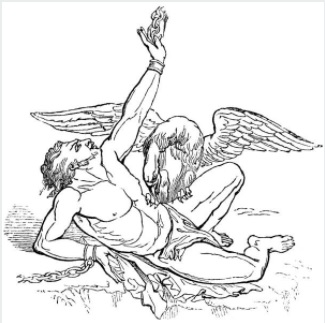 The tale of the theft of the heavenly fire by Prometheus for the welfare and progress of humanity is mentioned in Hesoid’s Theogony. Prometheus was the son of the Titan Iapetus by Clymene, who was one of the Oceanids. This act of the Titan Prometheus was interpreted by the king of gods, Zeus, as a challenge to latter’s omniscience and omnipotence. Accordingly, Zeus punished him to be chained and left to be devoured by an eagle who ate his lever daily, which then grew by night again. Ultimately, the Greek hero Hercules, with Zeus' approval, killed the eagle and freed Prometheus from his nemesis.
The tale of the theft of the heavenly fire by Prometheus for the welfare and progress of humanity is mentioned in Hesoid’s Theogony. Prometheus was the son of the Titan Iapetus by Clymene, who was one of the Oceanids. This act of the Titan Prometheus was interpreted by the king of gods, Zeus, as a challenge to latter’s omniscience and omnipotence. Accordingly, Zeus punished him to be chained and left to be devoured by an eagle who ate his lever daily, which then grew by night again. Ultimately, the Greek hero Hercules, with Zeus' approval, killed the eagle and freed Prometheus from his nemesis.
The story goes like this that once Zeus distributed divine gifts to all the gods but he completely ignored humans. The Titan Prometheus who was instrumental in creation of man, felt sorry for the humans, so he climbed up the Olympus and stole the fire from Hephaestus' workshop, secretly kept it in a hollow reed and delivered to the humans. Now humans were able to create fire, cook and warm as also make necessary tools for themselves. When Zeus came to know about this development, he was furious and decided to punish Prometheus chained to another high mountain, the Caucasus. Hercules who finally saved him was the demigod son and superhero of the ancient Greece.
3. Pandora’s Box
This story too finds a mention in Hesiod’s accounts and is linked with Prometheus’s theft of heavenly fire for the sake of men. While Zeus punished Prometheus for his act, he also ordered Hephaestus to create the first human woman out of the mud and water. Consequently, Athena breathed life and wisdom in the clay figure (first woman) and all other gods gave different gifts to her, such as Aphrodite gave her beauty and Hermes cunning, etc. Then she was named Pandora and produced before Zeus, who gave her a box with strict warning not to open it under any circumstances. Though Prometheus had advised his brother Epimetheus not to accept any gift from Zeus but the latter prevailed and gifted Pandora to him.
Although Pandora tried hard to resist her temptation to open the box but out of sheer curiosity, she opened the box. Consequently, all evils such as hatred, war, sickness, death and many other specified and unspecified ones were released into the world. When Pandora hastened to quickly put the lid again, she found only one thing was left yet to set free, which is usually deciphered as hope to the mankind. From this legendary tale of the Greek mythology, an idiom “to open a Pandora's box" has evolved in the Western literature and civic life, which implies that one should not do or start something that may pose unforeseen problems.
4. The Myth of Apollo and Daphne
Apollo was the Olympian god of knowledge, arts, archery, and so on, while Daphne was a Naiad Nymph and daughter of a river god in the Greek mythology. She was incredibly beautiful but had resolved to remain virgin and unmarried for the rest of her life. Though her father Peneus wanted her to get married but eventually Daphne had persuaded him to agree to her wish to remain virgin for life. Eros was the god of love who carried a bow and arrows, while Apollo himself was the god of archery. So, one day Apollo mocked and insulted Eros for carrying bow and arrows. In retaliation, Eros made two arrows, one of the gold and another of the lead. He now shot Apollo with the golden arrow, instilling into him the passion of love and lust for Daphne, on whom he already had a keen eye. Then he shot Daphne with the lead arrow, instilling into her an aversion and hate for Apollo.
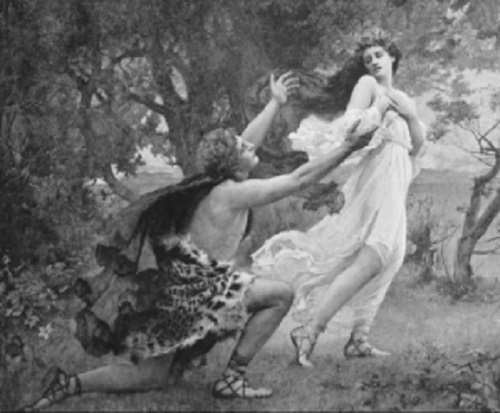
Now Apollo started chasing her but Daphne did not allow him to come anywhere close to her. However, when powerful Apollo was about to catch her with the assistance of Eros, she requested her father to open earth to hide her or change her form. As Peneus answered her call: A heavy numbness seized Daphne’s limbs; her soft abdomen and breasts were covered by a thin bark; hair changed into foliage; arms into branches; and foot into sluggish roots. Daphne thus turned into a laurel tree because the only option before her to sacrifice her body to avoid sexual advances of Apollo. Once she was transformed into a laurel tree, Apollo declared it a sacred plant and vowed to always wear it as his clothing, that way to stay with Daphne forever.
5. Perseus and the Gorgon Medusa
In Greek mythology, the term Gorgon was used for the monstrous females usually winged with living venomous snakes in place of hair along with extraordinary reach and power. In mythical tales, the three Gorgon sisters, Stheno, Euryale, and Medusa are mentioned, who were the daughters of Phorcys and Ceto. They had power to turn people into stone if anyone dared to gaze into their eyes. Perseus was the demigod son of Zeus and mortal Danaë, the daughter of Acrisius of Argos. Due to a prophecy, he was cast into the sea as an infant along with his mother by his grandfather Acrisius. However, he survived and grew on the island of Seriphus.
The King Polydectes of Seriphus desired Danaë and wanted to marry her, so the former tricked Perseus to send on a mission to kill Medusa, the only mortal among the three Gorgon sisters. The gods helped Perseus to equip him to deal with Medusa: Athena gave him a mirrored shield, Hermes gave winged sandals, Hephaestus a sword and Hades a cap of invisibility. As the gaze of Medusa could have turned Perseus into a stone, he was guided by the mirror shield and beheaded Medusa while she was asleep. Then he returned to Seriphus and rescued own mother by turning King Polydectes and his associates into stone at the sight of Medusa’s head. Another side story suggests that he had also rescued and married the Ethiopian princess Andromeda with the use of Medusa’s head on way back.
6. The Love Story of Eros and Psyche
In Greek Mythology, the mortal Psyche was even more beautiful than the goddess of love, Aphrodite. As Aphrodite was jealous and wanted to punish her, she asked his son, Eros, to hit her with his arrows, so that Psyche falls in love with the most vile and despicable creature on earth. However, when Eros saw her, he himself fell in love with her and failed to carry out the mother’s order. The years passed thus, and the parents decided to go to Delphi to seek Apollo’s guidance for Psyche’s marriage. The Oracle told them that Psyche must dress in black, and stay at the high mountain, where a winged serpent would come to take her as his wife. They followed as they had no choice after god’s prophetic words, there a fresh wind of Zephyrus raised her in a passage through the sky and deposited her at a magnificent castle, where she was greeted by a friendly voice enabling her to feel at home. Hence onward it became a routine that Eros would come every night to sleep with her like a loving husband and leave in the morning while it was still dark.
However, she had instructions not see his face else the relationship will be destroyed forever. After sometime two jealous sisters of Psyche too arrived at the castle, discussed the earlier prophecy and instigated her to see his face to make sure it was not a monster. While Eros was asleep, she tried to see his face in a lighted candle but a drop of hot oil fell on the face that awakened him. Eros immediately deserted her saying that there was no love without trust. Psyche felt very sorry and searched for him everywhere without success; finally, she approached goddess Aphrodite for help who gave Psyche three very difficult tasks to carry out as pre-condition for the reunion with Eros. With the help of nature forces, she completed nearly impossible tasks given by Aphrodite but she again refused to fulfil her commitment. Then other gods became sympathetic and detailed Hermes to find Eros and tell him all about Psyche’s efforts and dedication for love. Eros was now moved with her love and the two united again to live blissfully ever. As their wedding gift, Zeus gave her Ambrosia to taste that made her immortal like gods and even Aphrodite now accepted her.
Postlude
The Greek and Roman were two civilizations that evolved in the Southern Europe in close proximity and dominated many parts and contemporary civilizations of the world during their peak glory. Although the Romans militarily conquered Greece towards the last leg of the pre-Christian era but it was really Greek culture and religion that conquered and dominated Roman Republic and Empire later through the middle age. Many Greek social and cultural traditions, mythology and gods were adopted by Romans in their own customs and rituals. Therefore, many modern Roman gifts such as military warfare and strategy, literature, languages, laws, science, calendar, and so on, are actually joint contribution of the Greek and Roman civilizations to Europe and rest of the world. Similarly, republican way of life and democracy too had its origin and deep roots in the ancient Greece.
To be continued...
15-Mar-2021
More by : Dr. Jaipal Singh